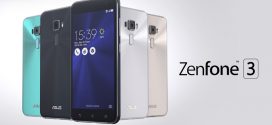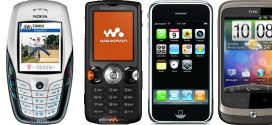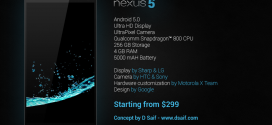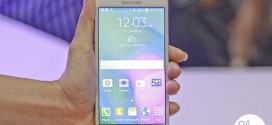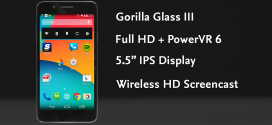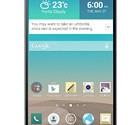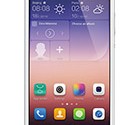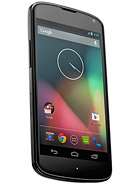 Today we’ll be taking a look at the LG Nexus 4 E960. As it would appear, the good folks releasing the Nexus series, or the series that generally holds the newest version of the Android OS, are always changing the manufacturers of their devices. Now I understand why that is done, as it would seem like poor business practice to go with the same manufacturer all the time. One of the main disadvantages of doing that is the fact that people may misinterpret things and believe that it was just another series of devices from that manufacturer ( series such as Galaxy or Optimus or Xperia or Droid or so many others ). The other disadvantage of that activity, the one I referred to as being a poor business practice, is the fact that the general idea of “playing favorites” will be released to the general public, and that never helped anybody. Therefore, I applaud their choice to do each device with another manufacturer. They’re sort of like the E.U. motto: Unity in Diversity or something like that.
Today we’ll be taking a look at the LG Nexus 4 E960. As it would appear, the good folks releasing the Nexus series, or the series that generally holds the newest version of the Android OS, are always changing the manufacturers of their devices. Now I understand why that is done, as it would seem like poor business practice to go with the same manufacturer all the time. One of the main disadvantages of doing that is the fact that people may misinterpret things and believe that it was just another series of devices from that manufacturer ( series such as Galaxy or Optimus or Xperia or Droid or so many others ). The other disadvantage of that activity, the one I referred to as being a poor business practice, is the fact that the general idea of “playing favorites” will be released to the general public, and that never helped anybody. Therefore, I applaud their choice to do each device with another manufacturer. They’re sort of like the E.U. motto: Unity in Diversity or something like that.
This phone, the LG Nexus 4 E960, is known to a few people under a few different names. One of the names it generally comes in is the LG Nexus 4. Some may actually prefer that name as it is in fact shorter, but for the sake of correctness, I will refer to it as the LG Nexus 4 E960. Also, this phone is known to some as the LG Mako, although I do not see much relevance between that name and the rest.
SUMMARY
As I promised I’d do some time in the past, I will start off this little review / preview / whatever you want to call it with a brief summary of the specifications of the phone, while also trying to sum up in a few words what this phone is best used for. This device seems a bit too good to be true. with all of its hardware features and software ones, I am beginning to think that the estimate price of around 230 euros is a bit of a sham. There is no way something with a Quad-Core processor, 2 GB of RAM and the latest version of Android ( 4.2 ) can cost so little.
As you may have already guessed, the hardware of this device pretty much enables it to do just about anything. Also, the fact that it has 2 GB of RAM makes it even better than some of the most powerful phones out there. Now I can’t really say how good the configuration really is in comparison to some others, because that would imply that I am losing my objectivity. However, if you truly want to know what it can do so you can brag to your buddies about it, just wait until the hardware’s turn to be reviewed and then start doing some research about its capabilities and limits and then compare it to your favorite system.
Few bad things can be said about this phone, as there really are only a few disadvantages to it. Even so, those disadvantages can only TRULY be considered disadvantages if you choose to have a problem with them. I, for one, find this phone to be quite powerful and only a few minor details aren’t all that big. The rest of features and capabilities are beyond a large majority of people’s understanding. You will see just what I mean when we reach that certain part.
GENERAL
This device is one of the phones I tend to dislike, simply because it uses a Micro-SIM instead of a Mini-SIM. I am a bit old fashioned and believe that the Micro-SIM isn’t worth getting, not yet anyway. It still isn’t so widespread that people will actually require it, else they cannot use the SIM card. This device supports the following networks: 2G ones ( GSM 850, GSM 900, GSM 1800 and GSM 1900 ) and 3G ones ( HSDPA 850, HSDPA 900, HSDPA 1700, HSDPA 1900 and HSDPA 2100 ). This phone was announced in October 2012 and it has yet to come out. It is believed that it will be hitting the market somewhere around the course of November.
BODY
The size of this device is just right, if you think as I do, but if you find 4.7 inch screen phones to be too big, you will surely detest the size of the LG Nexus 4 E960. This device is around 133.9 x 68.7 x 9.1 mm big ( or, if you prefer: 5.72 x 2.70 x 0.36 inches ). This device also weighs about 139 grams, or around 4.9 oz if you prefer that measurment unit ( personally, I despise it ).
DISPLAY
The screen of this device is one of the finer ones I’ve seen lately. The LG Nexus 4 E960 has a True HD IPS Plus capacitive touchscreen with 16 million colors. Now the opinions are shared on this matter, since some claim that this screen is better, while others claim that the Retina display is the finest and there are those who still prefer the Super AMOLED one. I urge you: do not take into consideration all sorts of benchmarks and stuff like that. In the end, something isn’t good because some know-it-all said it is; that something is good because you chose to make it good. For instance, benchmarkers and test makers claim that the Super AMOLED screen isn’t all that since it over-saturates colors, making them more pleasant to the eye. Popular opinion will tell you that people actually enjoy that certain feature.
The screen of the device, as I’m sure I’ve already mentioned, is a 4.7 inch one in diameter. This screen can house a resolution of approximately 768 x 1280 pixels. The pixel density of this particular screen is a really good one, revolving at around 318 pixels per inch. Now normally people say that the pixel density should always be above 300, as that is the maximum amount the human eye can perceive and will thus be the finest looking one. That is especially why this screen is so good, as it is large enough, of a great quality and it also has a superb pixel density.
This device’s display also has Multitouch on it, however, it isn’t the advanced sorts of Multitouch that can support more than two simultaneous fingers on it ( for one, I never found the use of that feature and also I believe that’s something only Sony has implemented in their Xperia phones ). The LG Nexus 4 E960 also has a very effective means of screen protection, that being: Corning Gorilla Glass 2. Now it won’t survive a strong hit with a hammer, but you’d have to be downright retarded to smash such a masterpiece of a phone with a hammer.
SOUND
As far as the audio of the device is concerned, the LG Nexus 4 E960 has no sound enhancements whatsoever installed on it, be them software-based or hardware based. This device is as basic as it gets as far as the audio is concerned. The alert types are the default ones ( Vibrations, MP3 and WAV ringtones ) and the phone has a standard 3.5 mm jack.
MEMORY
The memory of this device has its ups and downs, same as many other things. Perhaps the only downside of this device is the fact that it has no Micro SD card slot. However, that’s not really such a huge problem as the device comes in two different versions, each with more than enough storage space ( in my opinion ). The internal storage space of the device varies from 8 to 16 GB. The RAM of this phone is really good ( the current maximum, actually ) – 2 GB.
DATA CONNECTION
First of all, this is an NFC device. If you don’t know what NFC is, it’s sort of like a very fast infrared connection ( or at least very similar to the infrared connection you knew of ). To use it you have to bring the two device in less than 5 cm proximity and they will engage in a very fast data connection. Here’s the official definition of it:
Near field communication (NFC) is a set of standards for smartphones and similar devices to establish radio communication with each other by touching them together or bringing them into close proximity, usually no more than a few centimetres. Present and anticipated applications include contactless transactions, data exchange, and simplified setup of more complex communications such as Wi-Fi. Communication is also possible between an NFC device and an unpowered NFC chip, called a “tag”.
NFC standards cover communications protocols and data exchange formats, and are based on existing radio-frequency identification (RFID) standards including ISO/IEC 14443 and FeliCa. The standards include ISO/IEC 18092 and those defined by the NFC Forum, which was founded in 2004 by Nokia, Philips and Sony, and now has more than 160 members. The Forum also promotes NFC and certifies device compliance.
The LG Nexus 4 E960 has both GPRS and EDGE on it, however, it is unknown what Speed they can both reach or what Class they each are. The speed per say of the device is DC-HSDPA at 42 MB/s, HSDPA at 21 MB/s and HSUPA at 5.76 MB/s. The WLAN of this device is a Wi-Fi 802.11 a/b/g/n with Dual-Band, DLNA and Wi-Fi Hotspot. The Bluetooth of this device is a v4.0 one with A2DP. Also, the LG Nexus 4 E960 has a Micro USB v2.0 ( MHL ) USB port, which means that it does not require a HDMI port.
CAMERA
The main camera of this device is an 8 MP snapper that can photograph at resolutions of around 3264 x 2448 pixels and it can record video in 1080p full HD at around 30 frames per second. The features of this camera include: autofocus, LED flash, touch focus, geo-tagging, face detection and photo sphere. The LG Nexus 4 E960 also has a secondary frontal camera which has 1.3 MP in power, however, that one has no further advanced features for me to discuss.
BATTERY
The battery of this phone is a pretty good one. The LG Nexus 4 E960 has a standard Li-Po 2100 mAh battery on it which can hold the phone alive for around 390 hours in 3G stand-by and 15 hours in 3G talk-time. Therefore, it’s a pretty good battery life.
HARDWARE
The hardware of this device is a pretty powerful one. The processor of this device is a Quad-Core 1.5 GHz Krait which is accompanied by a Qualcomm APQ8064 Snapdragon chipset and an Adreno 320 GPU. All and all, it is a very powerful set of hardware which I believe can easily handle just about any task out there. Now I am not entirely sure how well it can compare in strength to a Tegra 3 configuration or something similar, but I do believe that it can do pretty much the same things, perhaps even better in certain parts.
SOFTWARE
The Android OS version of the LG Nexus 4 E960 is a really good one. As expected from all the products of the Nexus series, they never fail to deliver as far as software is concerned. The Android OS version on this phone is Android OS v4.2. I was aware that the Nexus devices would push the line forward by quite a bit, but I was surprised by the fact that they would name the v4.2 version in the same way as the v4.1 one – Jelly Bean. Perhaps it only offers small modifications, but we will know more about it soon enough.
FEATURES
The LG Nexus 4 E960 is positively packed with all sorts of features. The sensors of this device are: Accelerometer, Gyroscope, Proximity, Compass and Barometer. The messaging on this phone is done via: SMS ( with Threaded View ), MMS, E-Mail, Push Mail, IM and RSS. The browser type of this phone is HTML5 with no apparent support for Adobe Flash, fact which could prove problematic. The LG Nexus 4 E960 has no Radio, unfortunately. The GPS of this device has integrated support for A-GPS and GLONASS. Also, this phone has Java through Java MIDP emulation. The only available color for this phone is Black.
Here’s a brief list of what the LG Nexus 4 E960 is capable of:
- SNS integration
- Active noise cancellation with dedicated mic
- TV-out (via MHL A/V link)
- MP4/H.264/H.263 player
- MP3/WAV/eAAC+/AC3 player
- Organizer
- Image/video editor
- Document viewer
- Google Search, Maps, Gmail, YouTube, Calendar, Google Talk, Picasa
- Voice memo/dial/commands
- Predictive text input
This concludes our little review of the LG Nexus 4 E960. Thank you for reading this review. I hope it has been as helpful as possible. If you feel that anything is lacking from this review feel free to leave your suggestions in the comment section below for things which should be added and I will be sure to take them into consideration when writing my future projects. In the meantime, I sincerely hope you had as much fun reading my little review as I had writing it.


